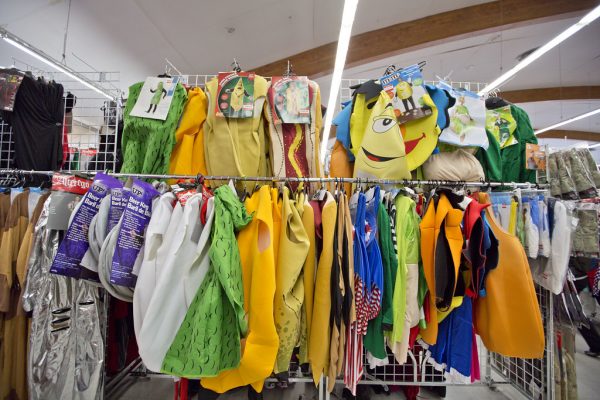Second-hand fashion has exploded in recent years, proven by the growth of platforms like Depop, which has seen its active members increase from 400k to 2.5 million since January 2017. But why? What’s the deal with it? Well, it improves your appearance for a start. That’s the opening line that piques the interest of fashionistas. But there’s something bigger going on. Not only does wearing second-hand clothing look great, its growing popularity could have a worldly impact, far more significant than fashion and aesthetics.
The fashion side
Vintage clothing is stylish
We’ll start with the fashion side, though. So many people look for individuality in what they wear. Look at streetwear brands like Supreme, Bape and PALACE: people desire their clothing because it’s unique and rare. Most second-hand clothing have similar attributes. It’s unusual to find two pieces that are the same, with most of what you buy being stocked just once. What’s more, the sustainable nature of second-hand expresses something about your personality, and says more about you than wearing a designer brand does.
Second-hand clothing is less expensive than first-hand
Reused clothing tends to be of higher quality, because if it wasn’t, it can’t have been durable enough for you to buy second-hand. Not only is this a sustainable way to shop, it’s also cost-effective. Although you’re getting garms no-one else has, like anything that’s second-hand, reused clothing tends to be far less expensive than high quality first-hand clothing. Occasionally there will be rare, high popular items that go for a lot: the boom in vintage Nike sweatshirts is an example. But even so, when compared to their designer brand counterparts, the price is minimal.
The environmental side
Reusing extends the life of clothing
As most of us know, excessive greenhouse gases is the largest cause of global warming. 60% of clothing now ends up in landfill within one year of its production. Over the past 20 years, the amount of clothes that Americans have disposed of has doubled from seven million to 14 million tons (80 pounds per person). When you consider that 1lb of clothing generates around 23lbs of greenhouse gases, these figures become even more terrifying. The carelessness of clothing disposal is an unrecognised epidemic, with fashion causing 10% of the world’s greenhouse gas emissions, which is more than flights and maritime shipping combined. It also uses around 80 billion cubic metres of water per year, with 2,700 litres required to make a simple white t-shirt.
This is where buying second-hand clothing comes in. If clothing gets reused, it doesn’t end up in the landfill so soon. There’s also less demand for production, since clothing is being used for longer. In other words, it’s more sustainable. Extending the life of clothing is one of the most effective ways to reduce waste. According to WRAP, the average lifespan of clothing is only 2.2 years, but extending this by an extra nine months would reduce carbon, waste and water footprints by around 20-30%.
Reusing saves energy from recycling
Reusing also helps to save energy. As waste disposal experts Bywaters state: ‘the recycling process typically requires energy, it’s better to send your items to be reused where possible as this reduces air, water, and land pollution. It also limits the need for raw materials and, of course, reduces how much waste enters landfill, which decreases greenhouse gas emissions’.
The humanitarian side
Second-hand is a replacement for fast-fashion
Fast-fashion is low-priced, low-quality clothing that takes ideas from the catwalk or celebrity culture and turns them around into cheap garments, meeting consumer trends with ridiculous speed. In short, it aims to get trends into the mass markets as ‘fast’ and cheap as possible. This might sound pretty good on the face of it, especially for people who are less well-off. But the reality is that, because the clothing is so low-price and low-quality, it is not worth the average person’s time to sell it second-hand, and is likely to end up in landfill as a result.
Then there’s the production. Fast-fashion brands exploit the unregulated minimum wages of Low Economically Developed Countries (LEDCs) in order to produce their clothing for the minimum expense. These workers face discrimination, terrible working conditions, lack of health and safety, and unacceptable pay. According to the Fashion Revolution, only 2% of garment workers earn a living wage.
There’s no question that along the supply chain and production of clothing there are unacceptable things happening. When Pretty Little Things are selling plastic dresses for 8p on Black Friday, is it just a bargain? Or is it because the people who made them are being paid $54 a month? And what about when Boohoo faces slavery allegations? Should it just be tolerated? And then there’s the garment factories in Bangladesh looking to swerve health and safety costs, only to crush the workers inside, killing over one thousand people.
Although it’s understandable why some people opt for fast-fashion, as wealth inequality increases and financial crises put many out of a job, sustainable fashion isn’t necessarily more expensive. Which is where second-hand clothing comes in.Shopping second-hand may not be an entire solution to such drastic problems, but it’s a beginning. It’s an actionable step in the right direction. But to curb the impact of fast fashion, there needs to be systematic change and mass education of the consequences. Because at this moment, the vast majority are unaware of these problems.
A mindset shift is required for change
There needs to be a shift in the way people think about clothes. Even if people wearing vintage items are not concerned about the environment, the fact that they are doing so still contributes to a culture shift. At this point, action is what matters most. We are all influencers, so by wearing second-hand, you encourage others to do it too, even if you don’t realise it.
But all of this doesn’t mean we can never buy brand-new clothes again, far from it. Rather, we need to take more accountability, acknowledge the damage fashion makes, and do the best we can to stop it. Make clothes last longer. Buy better quality. Try and re-sell or giveaway before throwing away. With every sweatshirt bought from Depop, every item made to last longer than two years, and every garment given away to a friend or relative, you are making a difference. Small actions lead to big changes.






















